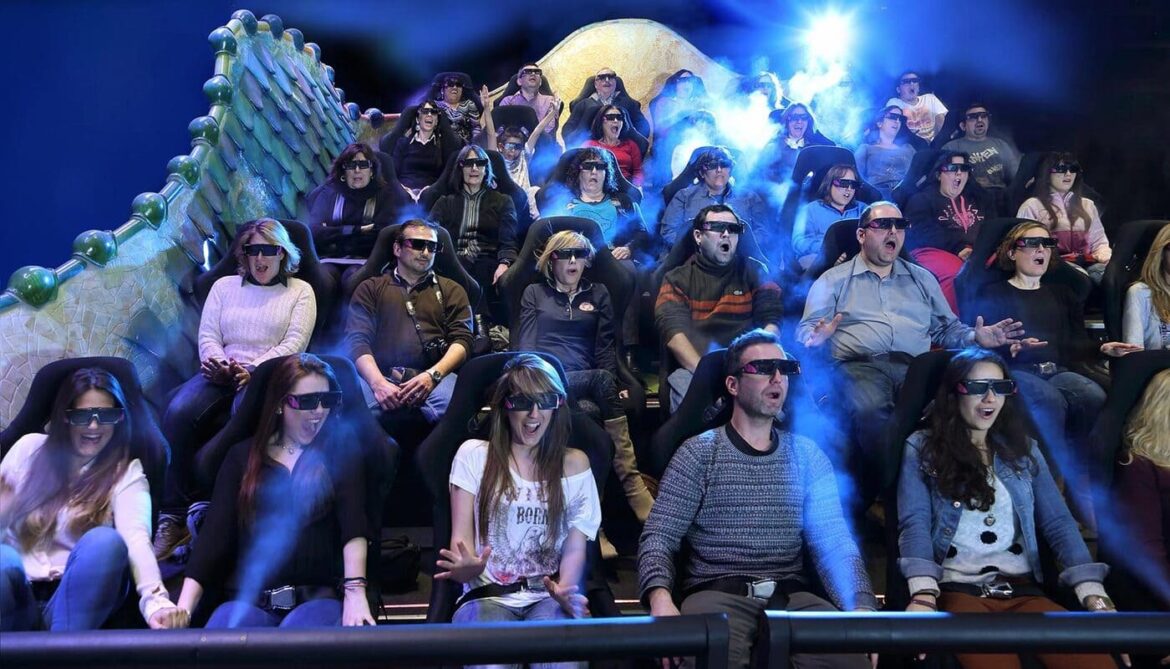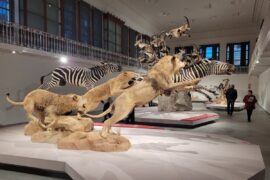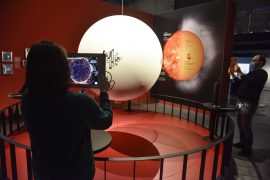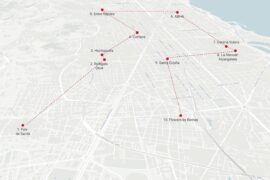When it was inaugurated in 2012, under the promotion of Toni Cruz and Josep M. Mainat and under the auspices of the Gaudí Chair at the UPC, the 4D experience that is still located on Carrer Larrard was a complete novelty: glasses three-dimensional, mobile seats, air at the feet and water in the face… An investment in money and energy that was worth it and that, as proof, is still worth it: queues of tourists still form there and children, d ‘here and there, they leave delighted.
The invention is so successful that we are in 2023 and the changes are still small, the main video remains intact and only two initial add-ons (a few minutes of humor with the virtual dragon roaming the room and another few minutes explaining in a slightly more didactic Gaudí’s architectural universe) have been introduced recently. In my opinion, there was no need. The video alone was and still is educational enough, exciting enough and unforgettable enough. Adding to it can’t make it better. In fact, I think it’s still the best digital experience in the city (above, even, the interchangeable pharaohs of the Ideal or the aseptic cubic rooms of the Casa Batlló).
The recreation of early 20th century Barcelona. This is worth everything. The descent into the city from outer space to enter a train and among the roads, the fields, the orchards, the spread clothes of the old quarters, the newly made statue of Columbus and the carriages around the promenades they make one wish that it was a definitive film about the golden age of Barcelona. The production bill is, from the first moment, visibly high (they use what is called active stereoscopy, which allows a high quality for the effect of three dimensions). And the beginning of the story is promising, absorbing, sexy. Once we are in Gaudí’s studio, and how nature inspires his drawings, we leave the history of Barcelona and delve into the history of Gaudí: in other words, his imagined city.
I don’t know if all the architectural pieces that appear there had to give their approval: La Pedrera, the Casa Batlló, the Sagrada Família… Even Montserrat experiences an avalanche of stones to shape Casa Milà, as well as a group of cypress trees seem to inspire the towers of the temple. The video perfectly combines reality and delirium, and instead of being too abstract or conceptual, it hits the surreal tone of Gaudí’s art (which is why Dalí knew how to understand it so well): mysticism, tradition, sensuality, fantasy, exaggeration and mythology. A video that, far from wanting to give the bar on the techniques of hyperboles in the arches or in the columns, is in itself a hyperbolic product. As genius would have it.
Knights, dragons, earthquakes, blood, swords, roses, churning oceans, the beating of the earth, shields with four bars, moving stones and restless curves. You don’t need a history textbook to explain history or a text on architecture to explain architecture when precisely we have come to use other technologies, precisely when audiovisual, combined with entertainment and experience, but above all with a good story , does not require a single word. Only when there are many words behind it, only when there is a good story, can you say that a picture is worth a thousand words. And not like that: because the image, by itself, would be nothing.
Lasting more than eleven years is not something most digital experiences can say. And much less the ephemeral exhibitions, of course. Maybe that’s why neither La Pedrera nor the Sagrada Família have dared to do one, and maybe that’s why the Palau de la Música is still thinking about it. We’ve already seen a little bit of everything, we’ve already used tablets and glasses and touch screens of all styles and sizes: now all that’s needed is, whoever dares to do it again, does so with the desire to make a work of art and not an entertainment. Move, and not impress. Listen up, new tech stops: Impress us, no longer impress us. Try doing something else. Here, at the Gaudí Experiència, they have been doing it for eleven years.















